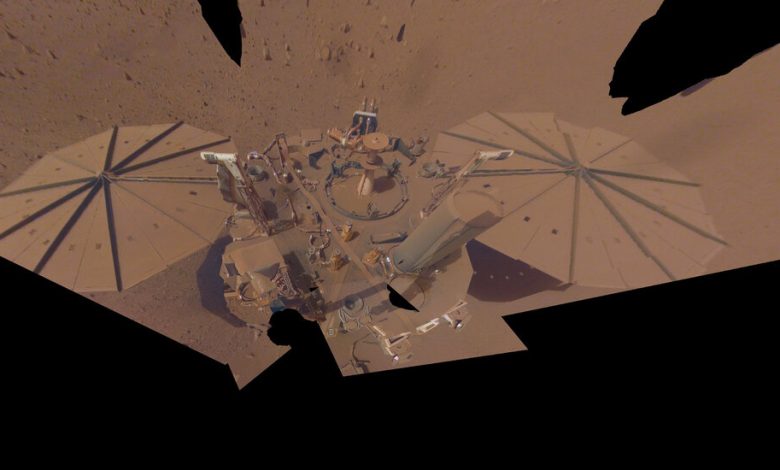NASA Concludes InSight, Mars Mission That Listened for Quakes

NASA’s Mars InSight spacecraft is dead.
For months, mission managers have been expecting this as dust accumulated on the lander’s solar panels, blocking the sunlight the stationary spacecraft needs to generate power.
InSight, which arrived on the surface of Mars more than four years ago to measure the red planet’s seismological shaking, was last in touch on Dec. 15. But nothing was heard during the last two communication attempts, and NASA announced on Wednesday that it was unlikely for it ever to hear from InSight again.
“We broke new ground, and our science team can be proud of all that we’ve learned along the way,” Philippe Lognonné of Institut de Physique du Globe de Paris, principal investigator of InSight’s seismometer, said in statement from NASA.
InSight — the name is a compression of the mission’s full name, Interior Exploration Using Seismic Investigations, Geodesy and Heat Transport — was a diversion from NASA’s better known rover missions, focusing on the mysteries of Mars’s deep interior instead of searching for signs of water and possible extinct life on the red planet. The $830 million mission aimed to answer questions about the planet’s structure, composition and geological history.
Mars lacks plate tectonics, the sliding of pieces of crust that shape the surface of our planet. But marsquakes occur nonetheless, driven by other stresses like the shrinking and cracking of the crust as it cools.
The mission’s final year proved particularly eventful, as its instruments detected vibrations from a sizable space rock, 15 to 40 feet in diameter, hitting Mars 2,000 miles away from the spacecraft on Christmas Eve last year. In May, InSight measured a marsquake registering 4.7-magnitude, the largest of the mission.
The spacecraft’s seismometer lived up to scientists’ expectations, providing new details about the interior structure of Mars as it measured seismic waves. But a second instrument, which was designed to burrow 16 feet underground, was never able to go far beneath the surface, foiled by unexpectedly clumpy soil. The device, nicknamed “the mole,” was to measure heat flow coming from the deep interior of Mars.
“We’ve thought of InSight as our friend and colleague on Mars for the past four years, so it’s hard to say goodbye,” Bruce Banerdt of NASA’s Jet Propulsion Laboratory, the mission’s principal investigator, said in the NASA statement. “But it has earned its richly deserved retirement.”
